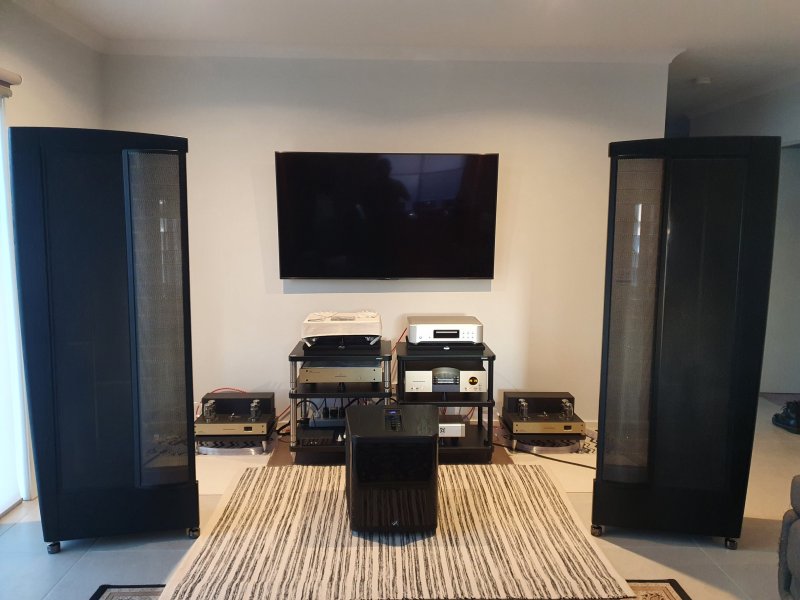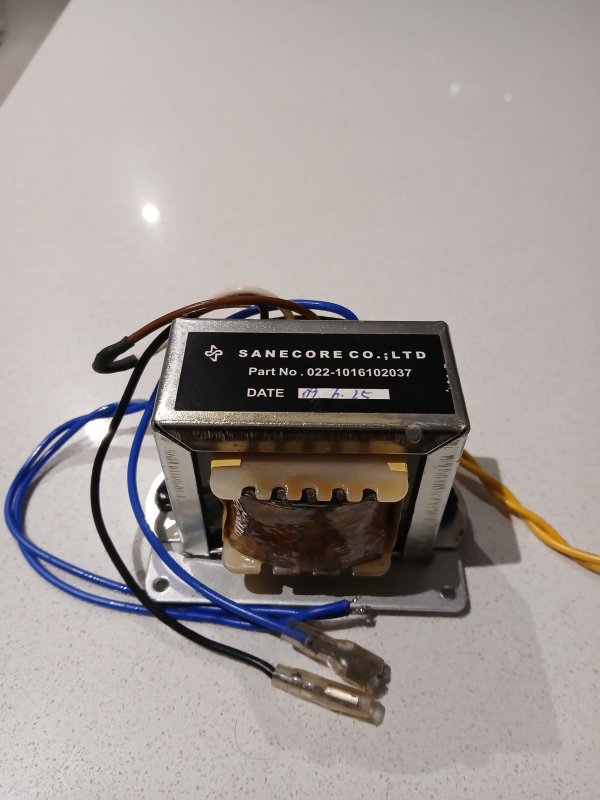Now that captured my attention!
G'day Romaz,
I find your post very interesting indeed and have some questions:
1. On the Ren15a they are fitted with built in high powered bass drivers, capable of delivering well over 500w of class D power. Why on earth would you need so much power on the panels?
2. The efficiency on the whole speaker itself is well over 90dB! My initial experience with this series listening extensively to a chaps Ren 15a's over here, driven with a high powered CJ amplifier, is too much (classic 120). The room is not suited for such power and completely over-energizes the room. Later on he used the ARC software to a great affect but still has issues... Hence, has downsized to the Classic 60se, which is the same power amp I'm using on my Ethos.
Question is: to acquire this much power, is your room massive?
3. I have a good close mate who is driving his CLX's with just the XA30.8 driven full range! No subs, no added power amps, monoblocks or any gizmos, just a stand alone stereo amp and it is just superb! There is nothing short of a marvelous performance not only in sound, but also in sheer transparency, totally natural timbre & tone, and most of all musicality. Although not comparable to what I currently have, I am totally satisfied with what the classic 60se can deliver through the Ethos with 250w of built in class D power plus DSP and all the added goodies from Martin Logan's proprietary design.
Hence, my final question: are you trying to achieve an artificial impact and not allowing the Stats to reproduce sound & tonality in its more pure and true form? (which as you know the Ren 15a can reproduce beautifully!)
I don't currently own these stats nor have lived with them in large rooms but the use of 300w of class A power by the legend Nelson Pass seems excessive to me.
Sorry, if I'm coming across as arrogant or rude. That's certainly not my intention. It's just that I absolutely love these stats and was planning to end up with the CLX's! However, after careful and extensive sessions with the Ren15a, now I'm enjoying my humble Ethos and will decide a bit later...
I'm trying to understand why you would require this much power?
These two types of stats cost an awful lot in Aussie land, (in excess of 40 grand!) and therefore one of these will be my final speakers. I'm just now wondering which one...
What's your advice mate?
Cheers RJ
G'day Romaz,
I find your post very interesting indeed and have some questions:
1. On the Ren15a they are fitted with built in high powered bass drivers, capable of delivering well over 500w of class D power. Why on earth would you need so much power on the panels?
2. The efficiency on the whole speaker itself is well over 90dB! My initial experience with this series listening extensively to a chaps Ren 15a's over here, driven with a high powered CJ amplifier, is too much (classic 120). The room is not suited for such power and completely over-energizes the room. Later on he used the ARC software to a great affect but still has issues... Hence, has downsized to the Classic 60se, which is the same power amp I'm using on my Ethos.
Question is: to acquire this much power, is your room massive?
3. I have a good close mate who is driving his CLX's with just the XA30.8 driven full range! No subs, no added power amps, monoblocks or any gizmos, just a stand alone stereo amp and it is just superb! There is nothing short of a marvelous performance not only in sound, but also in sheer transparency, totally natural timbre & tone, and most of all musicality. Although not comparable to what I currently have, I am totally satisfied with what the classic 60se can deliver through the Ethos with 250w of built in class D power plus DSP and all the added goodies from Martin Logan's proprietary design.
Hence, my final question: are you trying to achieve an artificial impact and not allowing the Stats to reproduce sound & tonality in its more pure and true form? (which as you know the Ren 15a can reproduce beautifully!)
I don't currently own these stats nor have lived with them in large rooms but the use of 300w of class A power by the legend Nelson Pass seems excessive to me.
Sorry, if I'm coming across as arrogant or rude. That's certainly not my intention. It's just that I absolutely love these stats and was planning to end up with the CLX's! However, after careful and extensive sessions with the Ren15a, now I'm enjoying my humble Ethos and will decide a bit later...
I'm trying to understand why you would require this much power?
These two types of stats cost an awful lot in Aussie land, (in excess of 40 grand!) and therefore one of these will be my final speakers. I'm just now wondering which one...
What's your advice mate?
Cheers RJ





